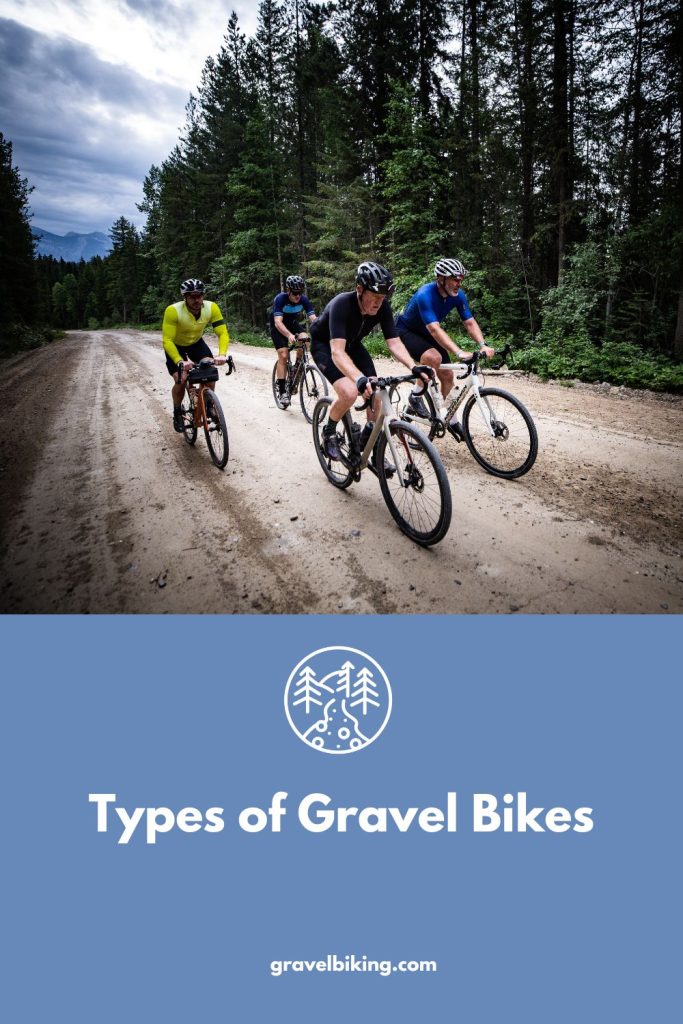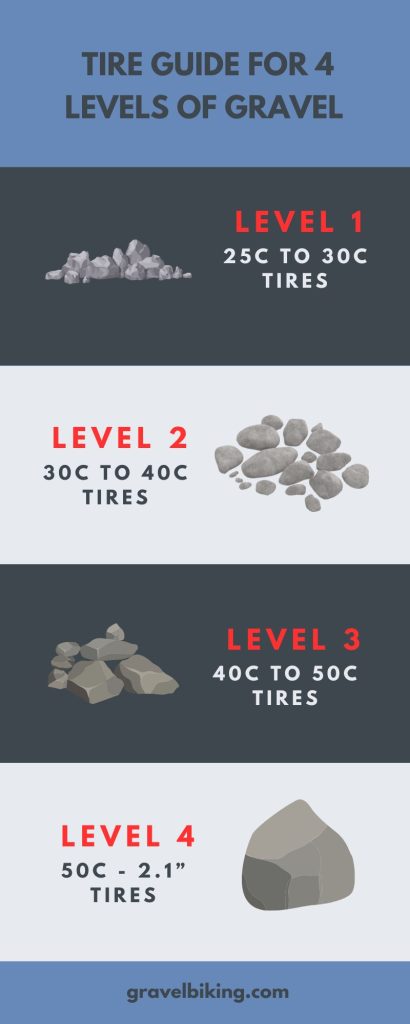When it comes to cycling, we are all blessed with many different types of bikes to choose from. Some are made for serious off-road terrain, some for high-speed tarmac, and even others that glide across the water.
Bikes are designed for different types of riding. Road bikes for road riding, gravel bikes for gravel riding, and mountain bikes for mountain biking. What’s interesting is within these disciplines, you get a lot of other different types of bikes.
Here at Gravel Biking, we often get asked if there are different types of gravel bikes you might find on the market, and yes, there are. Some gravel bikes are designed for different kinds of gravel riding, and it’s good to know about each. In this article, we will discuss:

Table of contents
What Is The Difference Between Gravel Bikes?
It’s important to understand that there’s a lot of difference from one gravel bike to another. You will find some gravel bikes which are excellent for road riding but have very limited ability when it comes to off-road.
On the other side, you will find some gravel bikes, which have a huge amount of ability off-road but are incredibly laggy when it comes to riding on the road. It doesn’t just come in the size of the tires but also the geometry and the different components the bikes are equipped with.
Just like you get different mountain bike types for different kinds of trails and courses, you also get different kinds of gravel bikes for different types of gravel. Let’s talk about that gravel next.

Types of Gravel
When it comes to different types of gravel, there are a few different ways people break them up. We personally split it along 4 levels. Here’s what you need to know:
Level 1 Gravel: Light Gravel, 25c to 30c Tires
The first level of gravel is what we would class as light dust with a dashing of rocks. It’s a road where the terrain is generally quite grippy, but it’s just dust, and you’re only coming up to a few small rocks you can roll over.
Level 2 Gravel: Medium Gravel, 30c to 40c Tires
Level two gravel is where you can expect lots of small rocks and loose terrain, which is fairly easy to ride. This, in my opinion, is the best kind of gravel. It’s super fun to ride and isn’t too technically demanding but looks epic in photos.
Level 3 Gravel: Hard Gravel, 40c to 50c Tires
Hard gravel is more technically demanding and something you’ll need some much bigger tires to take on. This is that kind of big rock gravel that you need to be focusing on how you’re going not to fall off and taking it a little slower.
Level 4 Gravel: Extreme Gravel, 50c – 2.1” Tires
Then we have extreme gravel. This is where the rocks are huge, the terrain is loose, you have potholes and washboard bumps, and you struggle to stay above 12 km per hour. This is the kind of gravel that will rattle you to pieces but is still a lot of fun to ride.
Depending on the different types of gravel, you might want to consider a certain type of gravel bike so you have the right tool for the job. Let’s tell you about the different types of gravel bikes.
Types of Gravel Bikes
Now for the fun bit, let’s start telling you about different types of gravel bikes. These types are what we believe you will find on the market. They are not industry standard, but in the future, it won’t be long before we make gravel bike types along these lines.
Road Gravel Bikes
A very common type of gravel bike we come across is road gravel bikes. These are gravel bikes that are made to spend 90% of the time on the road and 10% of the time on light gravel paths or trails. Road gravel bikes are very similar to a cyclocross bike without the aggressive geometry.
They are ideal for road bikepacking as they have a very relaxed geometry, typically come with thinner tires, are equipped with road bike gearing, and are made to be lightweight and fast. These often don’t even come with flared gravel bars but standard road drop bars.
Key Features
- Smaller tires 30c to 35c
- Made to be lightweight
- Relaxed geometry
- Road bike gearing
- 700c wheelset
Racing Gravel Bikes
Next, we have racing gravel bikes. This is what you see the professionals in races such as Unbound Gravel. They are gravel bikes made with speed in mind and to get you through very tough courses as quickly as possible, perfecting speed and aerodynamics.
These bikes will typically be carbon fiber gravel bike frames, have very aggressive geometry, and have high-end components such as carbon fiber wheels and electronic groupsets. They come in with a very high price tag and are costly to maintain when it comes to servicing and repairs.
Key Features
- Average tires 35c to 45c
- Made to be incredibly lightweight
- Aggressive geometry
- High-end components
- 700c wheelset
Off-Road Gravel Bikes
Next, we have off-road gravel bikes. These are designed to spend 90% of their time off-road and 10% of their time on tarmac. They are made not just to go fast but to offer a lot of control and grip when it comes to gravel roads, trails, and more.
They come equipped with larger tires up to 50c and often sport a smaller 650b wheelset instead of the larger 700c wheels for more tire clearance. You also get a much lower range of gearing and bars with a wide flare to perform well on rough terrain.
Key Features
- Large tires 42c to 50c
- Made to be off-road capable
- Geometry for control
- Low range gearing
- 700c / 650b wheelset
Drop Bar Mountain Bikes
Then we get drop bar mountain bikes. They are incredibly capable and the kind of gravel bikes designed for 100% off-road riding. They are full of great components and offer great control on gravel roads and very technical trails.
Drop bar mountain bikes are gravel bikes that come with low-range gearing, huge mountain bike tires, front and possibly rear suspension, and very wide flared bars. They are ideal for rough trails and courses on which you might run a mountain bike. Drop bar mountain bikes are not light but offer much more control than any other gravel bike.
Key Features
- Average tires 1.95”c to 2.4”c
- Made to be incredibly good off-road
- Large hydraulic disc brakes
- Off-road components
- 700c / 650b wheelset
Bikepacking Gravel Bikes
Finally, we have bikepacking gravel bikes. These are made with adventure cycling and long-distance travel in mind. They are very comfortable to ride, adaptable for lots of different types of bikepacking, and great at holding heavy loads of gear for your adventures.
Bikepacking bikes come with a very relaxed geometry, are packed full of mounts, have low-range gearing, and are generally made of either steel or aluminum to keep them very strong. They often have aluminum forks covered in even more mounts for epic carrying capacity.
Key Features
- Mixed tires 35c to 50c
- Made to be off-road capable and on-road fast
- Geometry for control and comfort
- Low range gearing
- 700c / 650b wheelset
How Do I Choose A Good Gravel Bike?
When buying a gravel bike, it’s easy when you know what you’re looking for. If you don’t, you can end up getting the wrong bike for you and ruining the gravel riding experience altogether. Here are our top tips to choose a gravel bike.
Think Road, Dust, Or Trail
A common mistake many gravel cyclists make is going for the wrong type of bike for the riding they want to do. Buying a road-focused gravel bike and then hitting a technical trail makes the riding incredibly uncomfortable and unforgiving.
The same goes for getting an off-road trail-ready gravel bike and then doing a lot of road riding and finding the work very challenging. Think about the type of gravel riding you dream of doing, then that will tell you what type of gravel bike to choose.
Do Your Research
When it comes to finding a good gravel bike for you, we highly recommend doing some research. Spending as little as 5 minutes just looking into specifications will go a long way. There’s many gravel bikes on the market and typically gravel bike models can look the same but be completely kitted out differently.
Here’s what I recommend looking at:
Price – Is it worth the money you are spending, or is it cheaper elsewhere?
Size – Never buy a bike for you that doesn’t fit. Do they have it in your size?
Geometry – Is it for relaxed riding or an aggressive race machine?
Tire Size – Smaller tires for road and light gravel, larger tires for off-road.
Components – For the best experience brands such as Shimano, SRAM, and Campagnolo.
Brand Value
When it comes to finding a good gravel bike, I am a huge believer in going with a reputable brand. Although you might spend more picking Specialized over a cheaper, lesser-known brand, you do get higher levels of quality control and much more research and development into the product.
That’s not us saying a lesser-known brand can’t provide that, but in general bigger brands have these higher prices not to make more money but to further invest in making excellent products. We also find resale on these is much better on known brands.
When In Doubt, Ask
If you are unsure of what you need, we recommend asking your local bike shop or people in your local cycling community. Cycling is full of amazing people who want to see you on the right bike, and the majority of advice you’re going to get is good.
As a cycling expert, I learned not just from riding lots of bikes and working in a bike shop. I learned a lot from asking questions and listening to people who knew more than me and wanted to help me along the way.
Read More: 6 Best Gravel Bike Handlebars
